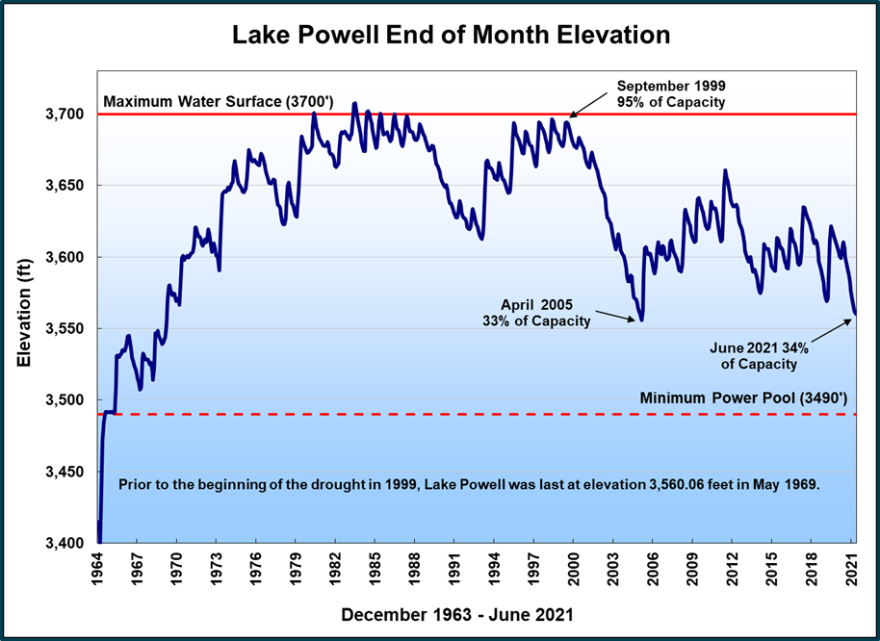The massive reservoir on the Colorado River hit a new historic low on July 24, dropping below 3,555.1 feet in elevation. The previous low was set in 2005. The last time the reservoir was this low was in 1969, when it first filled. It’s currently at 33% of its capacity.
The popular southwestern recreation hotspot on the Arizona-Utah border, which plays host to houseboats, kayaks and speedboats, has fluctuated over the past 21 years due to low river flows exacerbated by warming temperatures. About 4.4 million people visited Lake Powell in 2019, and spent $427 million in nearby communities, according to the National Park Service.

Demand across the seven U.S. states and two Mexican states that rely on the river hasn’t declined fast enough to match the reduced supply, said Brad Udall, a climate scientist at Colorado State University.
“Basically every drop in the river is being utilized. And so everyone wants a piece of this river and there’s nothing left over,” Udall said.
Some of Udall’s work receives funding from the Walton Family Foundation, which also supports KUNC’s Colorado River coverage.
Copyright 2021 KUNC


